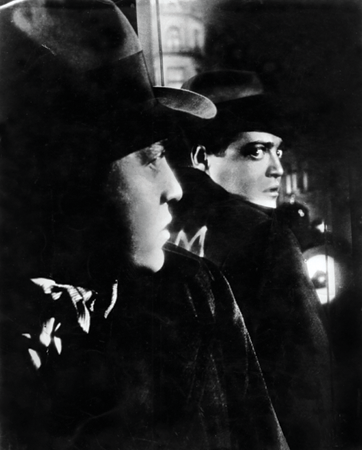
Introduction
BY J.I. BAKER

© FOREMCO PICTURES CORP./PARAMOUNT PICTURES, COURTESY PHOTOFEST
Peter Lorre is a whistling child murderer haunting Berlin’s shadowy streets in Viennese director Fritz Lang’s 1931 thriller, M, which had an enormous influence on film noir. (Lang himself became a well-known practitioner of the form.) “M is the ultimate proto-noir,” says Jake Hinkson, author of The Blind Alley, an exploration of film noir. “It’s an unrelenting look at atrocity that also displays a lot of sympathy for the devil. It is both dark and humane in equal measure.”
In 1933, Joseph Goebbels, the Nazi party’s propaganda minister, summoned famed Viennese film director Fritz Lang to his offices, announcing that his 1933 crime film The Testament of Dr. Mabuse would be banned. But because of his obvious talent, the Nazis wanted Lang to head the party’s film studio. That night, Lang—who had Jewish heritage—fled for Paris.
Just a few years later, Lang was directing the Hollywood crime drama Fury—the first of many films he would make for the studios. In the process, he brought (along with Billy Wilder and Alfred Hitchcock, to name just two) the stylized, theatrical influence of German expressionism to American film and merged it with the pulp fiction that had become popular between the wars. (For more on the roots of the genre, click this link.)
Like jazz, blues, and Broadway musicals, noir became a uniquely American art form by incorporating and transforming foreign influences. And like them, it was often overlooked at first—with its minor stars and low budgets—and was accorded little fanfare. But noir gave Humphrey Bogart and Robert Mitchum career-defining roles; fueled Joan Crawford’s middle-age comeback; and set the stage for the work of Martin Scorsese and Quentin Tarantino, among many others. Not least, noir illuminated—well, no, revealed—the dark side of the American dream. But despite the bleakness that often characterizes these films, they’re somehow always . . . fun.
Seventy-five years after the release of what has been called the first noir, The Maltese Falcon, this book revisits 20 of the genre’s best. A confession: For every movie reflected here, there are 10 we would kill (no pun intended) to have included. And no doubt there are many you think we unfairly overlooked—but who said life is fair? It surely isn’t for the doomed gumshoes and gun molls and gangsters who haunt the perilous world of film noir.